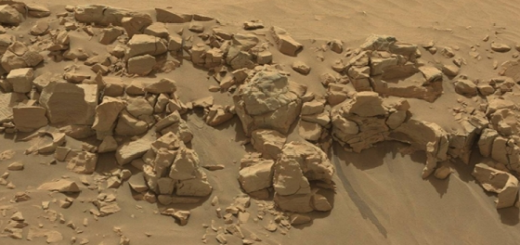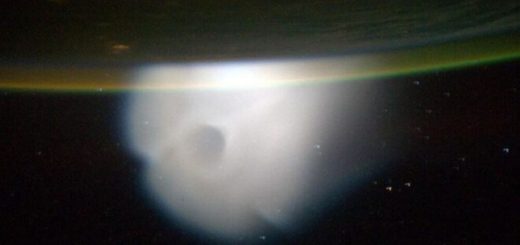Is There Anything In The Universe Bigger Than A Galaxy?

Kevin Montana – Many galaxies in the Universe, like for example our Milky Way consist of hundreds of billions of stars. We might think our Milky Way is large, but it’s a rather small galaxy compared to other galaxies.
Milky Way is ‘only’ 100,000 light years in diameter and that is nothing compared to for example Hercules A, which is 1.5 million light years across.
Galaxies are grouped into three size variations: dwarf galaxies, mid-range spiral galaxies, and gigantic elliptical galaxies. Dwarf galaxies are among the smallest galaxies that have been classified thus far and they are often only about 200 light-years across, and contain only a few tens-of-millions of stars.
Spiral galaxies, like our Milky Way are the most common type of galaxies encountered in the known Universe. The largest known spiral galaxy, NGC 6872, which is 522,000 light-years across from the tips of its outstretched spiral arms, is about 5 times the size of the Milky Way.
Gigantic elliptical galaxies range in shape from nearly spherical to nearly flat, and they can contain as many as a trillion stars. Located almost a billion light-years away, IC 1101 is the single largest galaxy that has ever been found in the observable universe.
See also:
Size Of “Small” Rosetta’s Comet Compared To Los Angeles
Blue Aurora On Jupiter Can Be Bigger Than The Size Of Earth
Earth Compared To A Giant Solar Flare Eruption
Why Are Green Galaxies So Rare?
More Cool Science Facts
At its largest point, this galaxy extends about 2 million light-years from its core, and it has a mass of about 100 trillion stars (some estimates suggest that it is 6 million light-years in diameter).
These numbers are astronomical, but the size and structure of things in the universe are defined by gravity and there are structures in the Universe that are larger than galaxies. The problem is that they are so large it is difficult to see them.
One example is the Boss Great Wall that is believed to be the largest structure in the Universe. It is a gigantic wall of galaxies, over a billion light years long and with 830 galaxies, combined into four superclusters; massive filaments of hot gas hold them all together. The BOSS Great Wall is a tight network of four superclusters. The largest two form a stretched-out wall of galaxies that’s about 1.2 billion light years long!
The Sloan Great Wall, which was discovered in 2003, has a similar size but still not quite as large as the Boss structure, which contains 830 galaxies – twice as many as Sloan and is 170% wider than Sloan.
There is a path of the sky known as ‘Zone of Avoidance’ that has long been invisible to astronomers. It is covered by the Milky Way, which obscures all structures behind it.
In 2016, astronomers discovered the Vela Supercluster, a previously undetected major concentration of galaxies, located about 800 million light-years away. Vela Supercluster, a gigantic group of galaxy clusters, hidden by the Milky Way galaxy’s dust and stars.
Superclusters are considered most massive known structures in the universe. Each one contains hundreds or thousands of galaxies. They can extend hundreds of millions of light-years end to end. The most famous, the Shapley Supercluster, for example, is thought to be the largest of its kind in our corner of the cosmos. It’s around 650 million light-years away.
Eridanus supervoid is a curious empty section of space which is missing around 10,000 galaxies. The supervoid, which is 1.8 billion light-years across and one of the largest structures discovered in the Universe. A structure known as known the Huge Large Quasar Group (also called Huge-LQG or U1.27) is a very large group of quasars that measures about 4 billion light-years across.
So, there are many structures in the Universe that are much bigger than a galaxy.
Written by Kevin Montana



 Creators of mankind
Creators of mankind Description of “Tall white aliens”
Description of “Tall white aliens” Where they came from?
Where they came from? About hostile civilizations
About hostile civilizations The war for the Earth
The war for the Earth “Tall white aliens” about eternal life
“Tall white aliens” about eternal life Video: “Nordic aliens”
Video: “Nordic aliens” Aliens
Aliens Alien encounters
Alien encounters The aliens base
The aliens base UFO
UFO Technology UFO
Technology UFO Underground civilization
Underground civilization Ancient alien artifacts
Ancient alien artifacts Military and UFO
Military and UFO Mysteries and hypotheses
Mysteries and hypotheses Scientific facts
Scientific facts


















